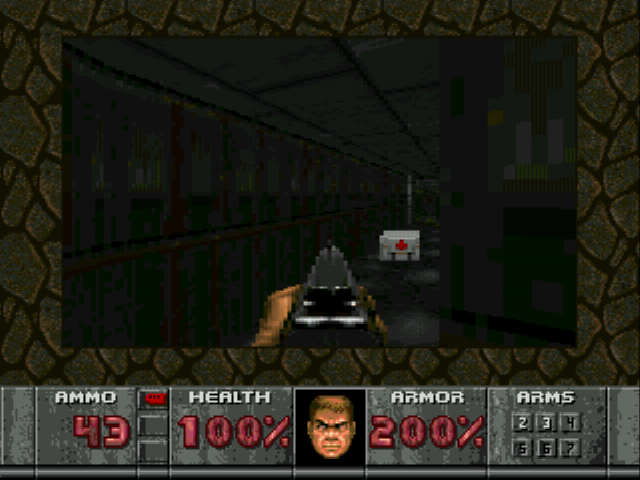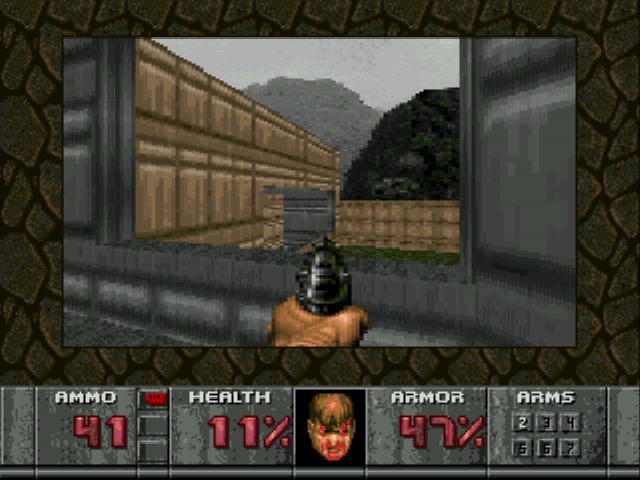DoomWhat is the fine line that divides classic from something that has aged poorly? This is something that collectors must be meticulous in evaluating, for it can make the difference between something being worthless, and something that is the quintessential lottery. These people are under a lot of scrutiny, and must make a decision based on the most accurate information available rather than letting their opinions sway them into making an incorrect decision.
Video game consoles and their associated components also fall into this dangerous line of either being old, classic, or simply terrible. For example, the Atari2600 is often considered a classic, but some consoles are not remembered so fondly (a perfect example being most of Atari's subsequent work). A perfect example of a console that is remembered with almost universally disdain is the 32X. The 32X was the second, and final, add-on for the Sega Genesis, and had a relatively small library of games (around 40 North American releases) of varying degrees of quality. However, one of the most noteworthy games is the 32X's port of Doom.
Doom is an unusual first-person shooter in that it took numerous console ports to get the game right, but in the modern era a perfect port with multiplayer could theoretically be on a mobile phone, if it isn't already. The original PC version was, in many ways, and one of the most technically sound of the early versions. The one well known port, the SNES port, has an excellent soundtrack but the most unresponsive controls and game play along with poor visuals. The Atari Jaguar port had the most responsive controls and best visuals, but lacked any music whatsoever due to a CEO's reluctance to pay money for licensing. The single best port of these early attempts could have been achieved by using the Atari Jaguar's fluid game play and visuals with the 3DO's soundtrack. Yet, how does the 32X port fare?
Doom, for a quick summary, is a game that is designed in the same way as Wolfenstein 3D, but the player would shoot and annihilate hordes of demonic creatures sent straight from hell...technically speaking, that would make the games the same technically speaking, and in many ways they are. You basically move around a level aiming right to left shooting everything in your wake, while trying to find the exit, in the purest and simplest sense. Doom is a lot darker than its inspiration, and treasure is non-existent, since to demons it is useless but to tease its victims.
The game play is exactly like the other ports, but much more fluid than most. The controls are fairly simple to pick up and use, and work well through the emulator. The camera (which creates the first person view) moves at a fairly rapid rate which can be both a benefit and a hindrance simultaneously. While this increases the speed of the game, and allows for faster paced action, it may cause the player to accidentally fall down a height that they did not intend, miss a staircase without proper aiming, or land on the acidic pools due to moving too fast to control. How much this hinders game play will depend entirely on the player. Ammunition should prove to be abundant enough so someone can film their audition tape for the A-Team, yet still have enough of a challenge due to conversation which is a very fine line. On the whole, however, if someone has played Wolfenstein 3D, they should be familiar with the game play mechanics. The difficulty settings are amusing, but fairly accurate in what they're trying to say for the difficulty will mount up.
Visually, the game is competent for a 32 bit port. It gets the job done and doubtlessly looks a lot better than its SNES counterpart. The animations are smoother, and various objects are much more distinguishable. It isn't perfect compared to the 64 bit counterparts, but for the bits it gets the job done. The dark atmosphere is perfect for a demon annihilation game, and...it does the PC version fair justice for a console port, despite showing its age.
The audio for this port is what makes it memorable as an atrocious port for many gamers, and many analogies on it's quality is to a certain bodily function's sound. The music is typically the only real point covered in a standard conversation of this port. The music is best compared to, however, a midi file gone berserk at time. While the music is doubtlessly sub par to many of the other ports, it should be noted some of the early PC versions, which have been remarked upon as having a good audio through modern sound-cards, it would have had the exact same audio because of how certain sound cards would have responded. As well, the actual sound effects are fairly solid, such as the death cries and weaponry. Finally, the music can be turned off in-game separate from the sound effects, which does not force the player to listen to something they may or may not enjoy (for many, likely the latter). Thus, turn up some heavy metal, or have another port of Doom's soundtrack (like the SNES or 3DO's) set on loop, and kick some demonic (explicit).
Doom has been covered numerous times by countless reviewers, so there is little that hasn't been said that could already be said. The 32X version is a fairly solid port for the period, and if someone is willing to overlook the sub-par audio is definitely worth a look at. This game may go down in history as an abomination, but is really a misunderstood child that has been neglected for a single defect. No one is perfect, and this game isn't, but it deserves a place in history as an early adequate Doom port, and definitely has its placed on Vizzed.
Graphics
9 Sound
4 Addictive
10 Depth
3 Difficulty
6


 User Notice
User Notice 






















